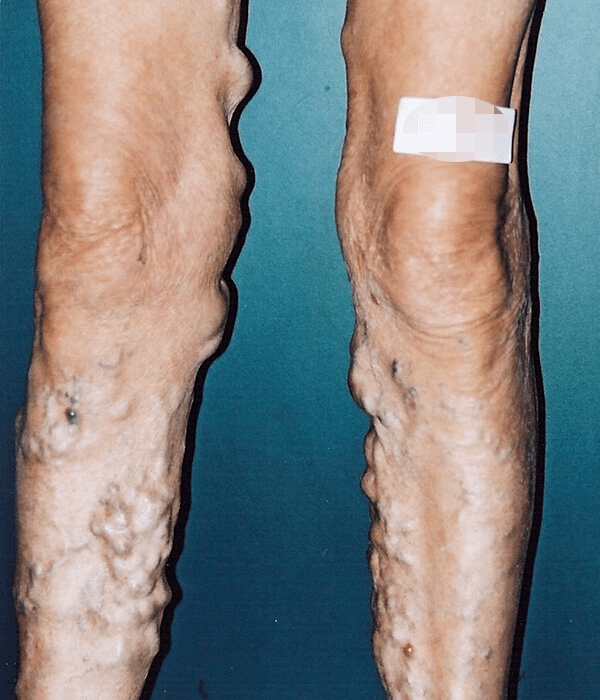Varicose Vein Clinic Melbourne
Treating Varicose Veins
Treating Varicose Veins
Australian Vein Clinics can treat both visible varicose veins that have become large and torturous and smaller ones hidden under the surface.
About Varicose Veins
Varicose veins are veins that have become enlarged due to pools of blood forming as a result of damaged valves. These veins often appear twisted and bulging at the skin’s surface but are also sometimes hidden within the fat and under the surface of the skin. If these veins are left untreated, they can cause further problems throughout the body.
Symptoms of Varicose Veins
Varicose veins are often large and bulging but can sometimes be underlying or hidden under the surface. It is not uncommon to have no symptoms; however possible symptoms include:
- Pain in the area – Usually a dull pain (not sharp or immediate). It indicates that the pain is vein related if it subsides when the legs are raised.
- Itchiness in the area
- A burning or throbbing sensation
- Muscle cramps and leg fatigue
- Leg and ankle swelling and heaviness
- Leg restlessness at night
Causes of Large Varicose Veins
You’re at risk of developing varicose veins if you…
- Are pregnant
- Struggle with obesity
- Have a family history of varicose veins
- Have experienced leg trauma
- Experience long periods of standing
Varicose Vein Treatments
Depending on the ultrasound of the area, there are a few different treatments that your vein specialist may recommend for the treatment of varicose veins.
Ultrasound Guided Sclerotherapy
Ultrasound-guided sclerotherapy (UGS) is a minimally invasive procedure used to treat varicose veins. It involves injecting a sclerosant solution into the vein, which causes it to collapse and eventually disappear. UGS is often performed in conjunction with ultrasound imaging, which allows the physician to precisely target the treated vein. This technique is highly effective, with published success rates ranging from 70-98%. In addition, UGS is associated with fewer complications than other treatment modalities, such as surgery. As a result, it has become the treatment of choice for many patients with varicose veins.
Endovenous Laser Ablation
Endovenous laser ablation is a medical procedure used to treat varicose veins. The procedure involves inserting a thin fiber into the vein and delivering laser energy to the vein wall. This causes the vein to collapse and close, redirecting blood flow to healthier veins. Endovenous laser ablation is a minimally invasive procedure that can be performed in an outpatient facility. Endovenous laser ablation is an effective treatment for varicose veins and can help improve your symptoms and quality of life. This procedure is usually warranted for patients with big and extensive varicose veins.
The Different Stages of Varicose Veins
Varicose veins are a common condition that occurs when the valves in the veins fail, causing blood to pool in the legs. Over time, this can cause the veins to become enlarged and distorted. Varicose veins typically occur in the legs and feet, but can also develop in other parts of the body. There are four main stages of varicose veins: early, moderate, advanced, and severe.
Early Stage
Moderate Stage
Advanced Stage
Severe Stage
Varicose Veins FAQs
More often than not venous disease will appear on one or both of your legs. The reason that occurs is because the valves that help circulate blood from your legs back to the heart weaken over time. This results in the slow pooling of blood, and the appearance of swollen veins on the skin surface.
Varicose veins if left untreated may begin to cause pain and discomfort. The colour of the vein will begin to change on the skin surface. You may also begin to experience minor swelling and puffiness in the leg. If left for too long, it can lead to ulceration of the skin in more severe cases. We recommend that as soon as you become aware of a varicose vein appearing, you come in for a consultation.
No, when varicose veins are treated correctly and aftercare instructions are adhered to the treated varicose veins will disappear forever. It is important to note however, that other untreated veins may still appear in different areas.
The Jury is still out as to who or why these veins develop. The main factors are hereditary, pregnancy, age, and jobs that require prolonged standing (e.g. teachers, hair dressers, retail staff).
In the initial consultation, your phlebologist will go through a full account of how veins are formed. They will map out your surface veins, and scan the deeper veins with our Ultrasound machine. Having the use of the ultrasound gives the phlebologist an exact picture of what is happening deeper in the leg. You will get a costing and treatment plan at the end of the consultation.
Treatment of varicose vein should take no longer than 30-60 minutes depending on the severity of the varicose vein. You can even go back to work the same day.
Our Varicose vein treatment is all non-surgical, and not invasive. It involves some small injections using a very fine vibrating needle. We have a specially designed bed which helps identify the veins through the use of gravity so that we have the best picture possible. John Marx has also specially designed his own vibrating needle. The vibration significantly reduces the pain, and increases the accuracy. We use an ultrasound machine when injecting deeper leg veins.
You do not need a referral to see our Vein specialist.
You can contact us via our booking page or you can call us on 9824 1166 and speak to one our lovely reception staff
View some before & after shots of varicose vein removal at Australian Vein Clinics





